#shrubby St. John’s wort flowers
Explore tagged Tumblr posts
Text
Shrubby St. John’s Wort is a Hearty Native with Beautiful Flowers
Late Blooms It’s very late fall (actually technically just became winter) and even in Florida we don’t have a lot of flowers blooming anymore. Every once in awhile I still stumble on a few out there, though. Last week when I went to hike around Watermelon Pond, I found several bushes of these pretty shrubby St. John’s wort (Hypericum prolificum) that were still blossoming. There was one by the…

View On WordPress
#beautiful wildflowers#colorful wildflowers#fall wildflowers#Florida St. John’s worts#Florida wildflowers#native St. John’s wort#nature photographs#nature photography#photography#shrubby St. John’s wort#shrubby St. John’s wort flowers#St. John’s wort#St. John’s wort photographs#wildflower photographs#wildflower photography#wildflowers#yellow wildflowers
0 notes
Text
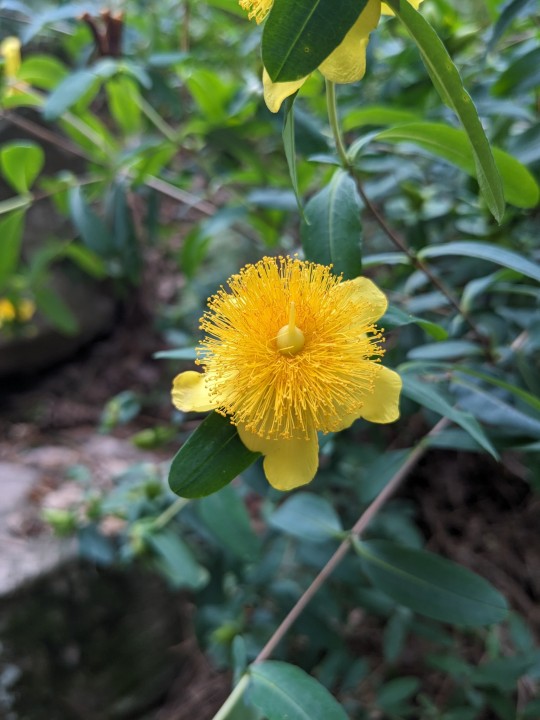
Hypericum prolificum / Shrubby St. John's Wort at the Sarah P. Duke Gardens at Duke University in Durham, NC
#Hypericum prolificum#Shrubby St. John's Wort#St. John's Wort#Hypericum#Flowers#Nature photography#Native plants#Native flowers#Sarah P. Duke Gardens#Duke Gardens#Duke University#Durham#North Carolina
1 note
·
View note
Text
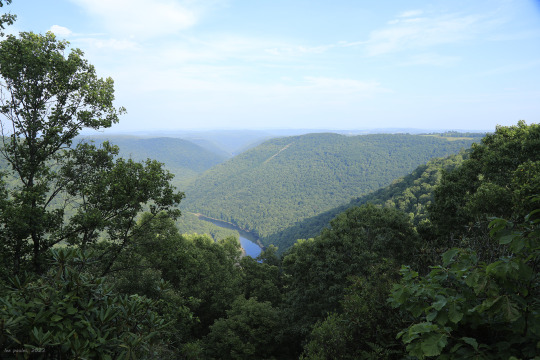

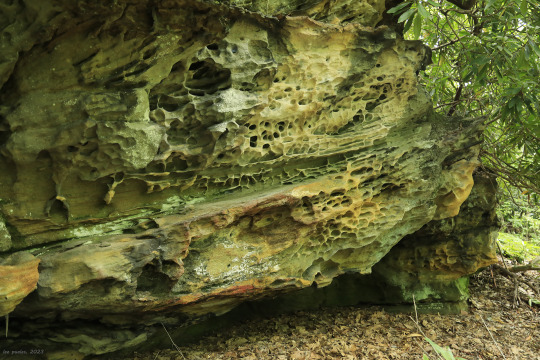

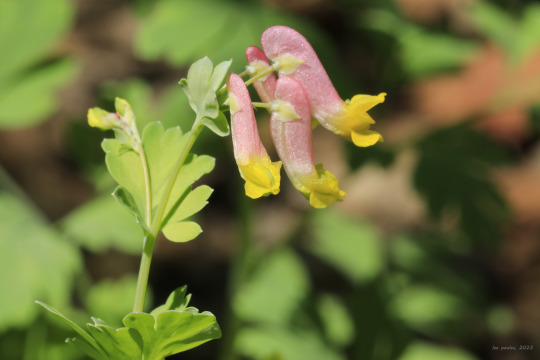
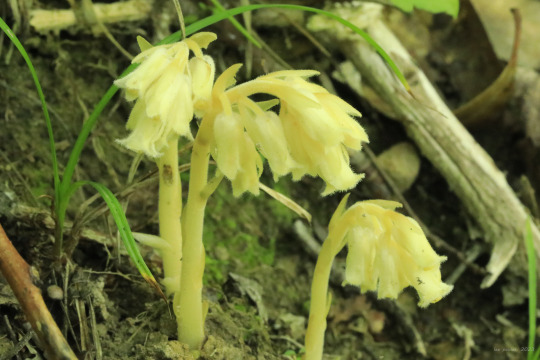


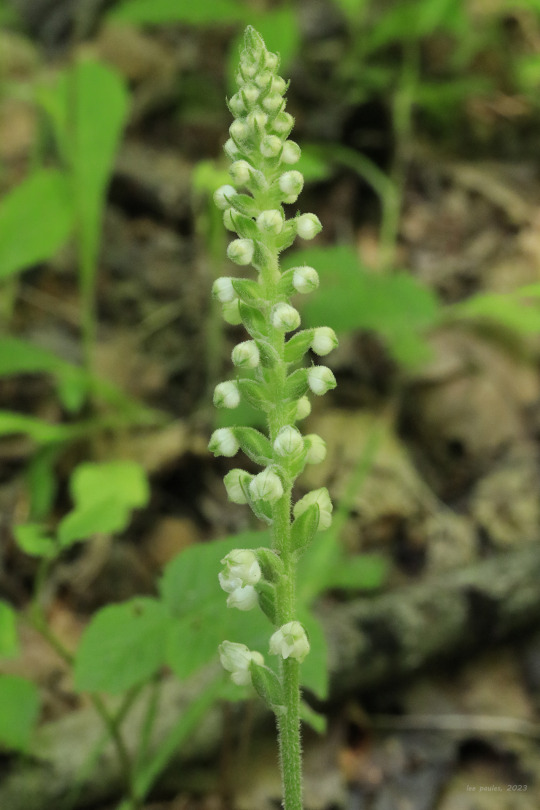
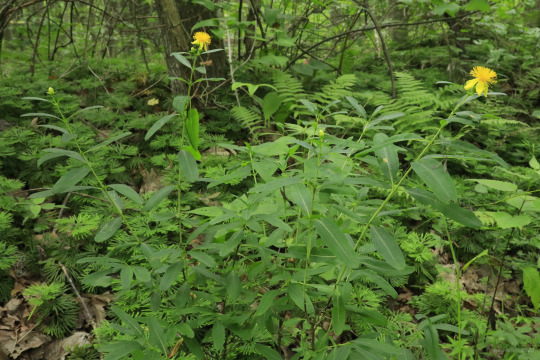






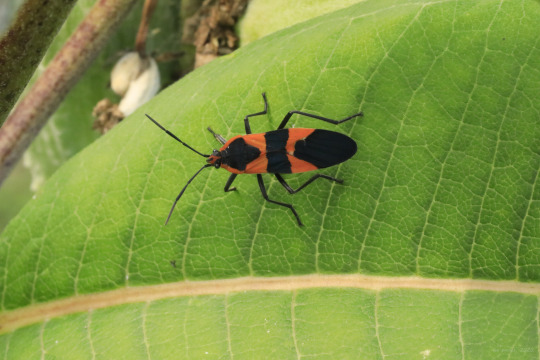
A hike in the Cheat River Canyon on a hazy, mid-summer day brings a great many rewards, both large and small.
From top: Fractured and pitted sandstone gives testimony to the canyon's ancient struggle with the elements; black cohosh (Actaea racemosa or Cimicifuga racemosa), whose towering flower spikes stalk the old woods like magical beings; the colorful rock harlequin (Corydalis sempervirens), an endangered fumitory that haunts the canyon's rocky outcrops; pinesap (Monotropa hypopitys), a parasitic plant closely related to Indian pipe; spotted St. John's wort (Hypericum punctatum), which is distinguished from the invasive St John's wort (Hypericum perforatum) by the numerous black dots on its flowers and leaves; downy rattlesnake plantain (Goodyera pubescens), a shade-tolerant terrestrial orchid that favors oak-hickory woods; shrubby St. John's wort (Hypericum prolificum), a mounding, deciduous shrub of open, sandy woods; orange-fringed orchid (Platanthera ciliaris), a stunning late summer beauty of Appalachia's moist meadows and open woods; a hummingbird clearwing moth (Hemaris thysbe) visiting a late-blooming milkweed; a silvery checkerspot (Chlosyne nycteis) drinking up the nectar of a butterfly milkweed (Asclepias tuberosa); an American green crab spider (Misumessus oblongus) stalking a black-eyed Susan for its next meal; a large milkweed bug (Oncopeltus fasciatus) being perfectly beautiful on a lazy summer day; and last but not least, a hulking patch of eastern Jack-0'-lanterns (Omphalotus illudens), which contrary to what field guides say have never glowed in the dark for me (I love the toxic little beauties nonetheless).

#appalachia#vandalia#west virginia#wildflowers#flora#summer#snake hill wildlife management area#cheat river canyon#chestnut ridge#fungi#insects#orchids#black cohosh#rock harlequin#pinesap#spotted st. john's wort#downy rattlesnake plantain#shrubby st. john's wort#orange-fringed orchid#hummingbird clearwing moth#silvery checkerspot#butterfly milkweed#american green crab spider#large milkweed bug#jack o' lantern#lepidoptera
174 notes
·
View notes
Text
[CM] - Flowering Plants 1
More lexicon posts, woohoo! Today I've got some flowering plants. This isn't the full list, but it's the ones I've assigned words so far, so it'll have to do until I work on more.
New york aster (Symphyotrichum novi-belgii) - Palefi Derived from base Clanmew palifuh* (purple) and pfefi* (fluff petal). Tall, thin-stemmed plant with narrow leaves and pale purple flowers. Grows on marshland borders and may be found in nutritionally poor soil. Attractive to butterflies, moths, and bees!
Bog aster (Oclemena nemoralis) - Oskfi Derived from palefi and osk* (white). Very similar to palefi, but a little smaller and with pale, pink-or-white flowers. Found in wetlands and on shores.
Bog goldenrod (Solidago uliginosa) - Morree Derived from waymor* (taller than it is wide) and rreen* (golden). Very tall with a thin, reddish stem and fluffy golden flowers that bloom in late summer. Grows in wetlands and on shores. Resistant to deer and attractive to butterflies.
Water hemlock (Cicuta maculata) - Mwrai Branched plant with clusters of tiny white flowers and deeply-toothed leaves. Grows in marshes and on shores. Mwrai is highly toxic! Consumption results in tremors, extreme pain, fever, and death. Mwrai is especially dangerous due to its resemblance to the herbs boneset and valerian.
Blueflag iris (Iris versicolor) - Pail Derived from palifuh* (purple) and pai* (petal). Thick-leaved plant with fancy blue-to-purple flowers. Found in marshes, fields, and on shores. Though beautiful, pail is irritating when handled, and ingestion results in stomach upset.
Fragrant water-lily (Nymphea odorata) - Ssoskai Derived from osk* (white), pai* (petal), and yasschoop* (sense of smell). Leaves are wide and float on the water; flowers are ornate, white with a yellow center, and bloom from morning til noon during warm months. Ssoskai are found exclusively on the lake. Flowers carry a sweet scent that may be detected hundreds of yards away!
Wild sarsaparilla (Aralia nudicaulis) - Sikibow Cat-sized plant with tiny white flowers in spherical clusters; these flowers develop into dark berries in mid-summer. Grows in forest understories. Browsed by deer and moose, while the berries are consumed by foxes and chipmunks.
Sheep laurel (Kalmia angustifolia) - Besskaf Derived from beka* (pink), peske* (clusters of flowers), and mwssaf* (poisonous). Shrub with thick, leathery leaves and circular pink flowers. Grows in wetlands, forests, and on shores. Besskaf is highly toxic to cats and also exudes chemicals that inhibit other plants, particularly conifers.
Northern St. John's-wort (Hypericum boreale) - Mwurfs Leafy, shrubby plant with fancy yellow flowers. Found in wetlands, on shores, and in shallow lake water. Mwurfs is toxic - contact may result in boils and irritation, while consumption leads to photosensitivity, drooling, and depression.
Red clover (Trifolium pratense) - Shuf Tiny spreading plant with little pink-or-red flowers. Grows in fields and on shores. Shuf is an herb that aids skin inflammation and (possibly) arthritis! It's also consumed by numerous animals.
6 notes
·
View notes
Photo









Callicarpa americana and Hypericum prolificum both sub shrubs and thicket species growing along side many other thicket forming species with some shade from the large post oaks, Quercus stellata, left in the Wildcat Glades complex.
There is more to see than just the fruit on American Beauty Berry, spectacular though these purple edible berries are for both human and birds as well as other fauna, the extrafloral nectaries are incredible attractors of ants and the oil glands give this plant a specifically fragrant odor, especially when in bloom. The vast majority of hairs are capped with these oil glands. If you like native species that are extreme nectar source each node junction is capped with a cymose cluster of nectar rich white to purple tinted flowers that are mind blowing.
Another species extremely rich in both pollen and nectar is that of Shrubby St. John’s Wort. This may be one of my favorite showy subshrubs and members of the prairie and savanna thicket communities.
In my state of Ohio, the best examples of Shrubby St. John’s Wort are found along Lynx Prairie atop of the hill. On the other side of Davis memorial parking lot adjacent to the cane break entrance( so behind and on the otherside of the road) their is a noticeable powerline cut that is full of them and staghorn sumac.
If you don’t already garden with these two species, I recommend doing so.
#Callicarpa americana#callicarpa#hypericum#hypericum prolificum#plantblr#mo#wildflowers#Quercus stellata#quercus#botany#cottagecore#meadowcore#permaculture#plant natives#kill your lawn#meadow core#meadows#barrens
27 notes
·
View notes
Text






Plant of the Day
Tuesday 10 September 2019
Along the edges of the forest tracks of the Isle of Skye, Scotland, the small deciduous shrub Hypericum androsaemum (tutsan, shrubby St. John’s wort, sweet-amber) can be found flowering. This is a native to open woods and hillsides, and frequents woodland edges in sheltered places, generally at low altitudes. The yellow flowers appear above paired oval leaves and are followed by long-lasting, berry-like fruits that mature from red to black.
Jill Raggett
#Hypericum#tutsan#St.John’swort#deciduousshrub#yellowflowers#native#redberries#woodlands#woodlandfloor#forest#skye#isleofskye#scotland#plants#horticulture#wildflower
163 notes
·
View notes
Text
A Stitch(wort) In Time Saves Nothing If You Don't Pick It (16/03/20)
(Tumblr decided to delete my draft so I ragequit this for two days)
The sky is bright, empty, and blue. The air is briskly cold but clean. I have so far seen a lot of Lords And Ladies, a lot of Lords And Ladies, incessant amounts of Lords And Ladies.

I am exploring lakeside today instead of in the heathland. I am determined to find some Ramsoms like the other foragers I follow have. The general advice has been waterside woodland, as old as possible.
With the recent rain there is a lot more waterside than before! But the age is potentially a problem, so we shall see what we can see and live in hope.
On the suburban end of my walk, leading up to the lakes, there has been thriving greenery starting to shrug off the grey of winter. A rife of blue flowers started to emerge as I approached the gate, leaves spotted with white, quite pretty. Alkanet or Bugloss, and in their abundance, absolutely beautiful and rather like Forget Me Not flowers for the individual heads. I should have recognised them instantly - rather than letting the app confuse me into hoping they were Comfrey - for they look exactly as they do in Elder Scrolls IV Oblivion, the game designers did a wonderful job on the plants.
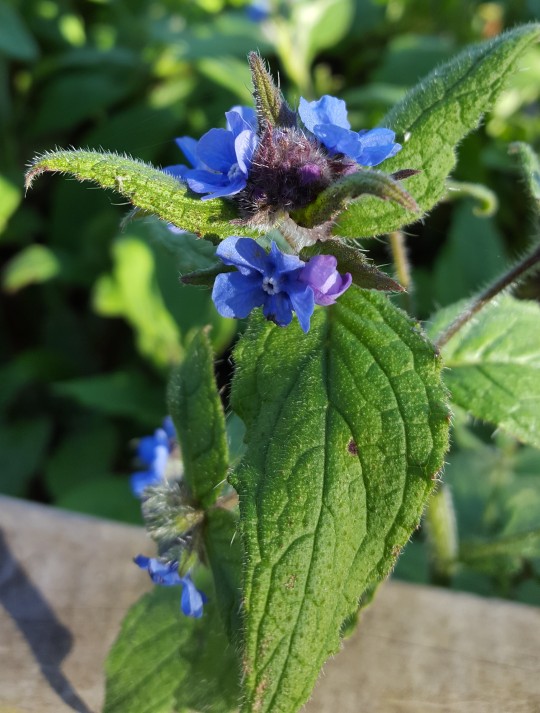
Picking my way through the swampy ground I eventually made it to the path which followed a seemingly circular route, I chose to go left to start with. I passed some grumpy swans and a fisherman mired in mud to practice his craft. I don't envy the conditions but give him props for going to such lengths. Takes guts to be that close to swans, evil bastards that they are.
Continuing onward, I see some dogwalkers, numerous water based plants which look like Irises, more bloody Lords And Ladies, and wonder of wonders I find St John’s Wort--!
Not.
Of course I didn’t find anything so forageable as that. It was Shrubby St John’s Wort, otherwise known as Sweet Amber... uses, none. Cute little plant though.
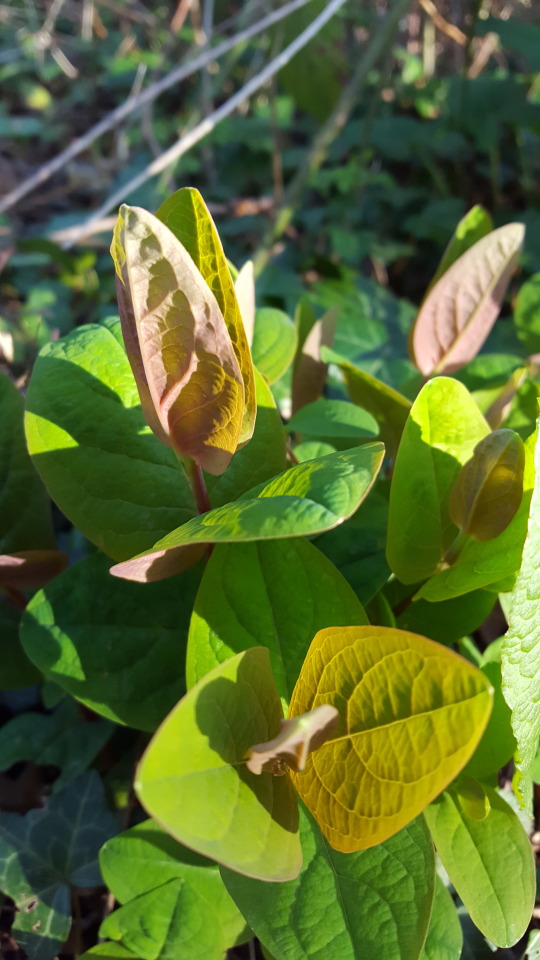
Next up is Wood Avens, which might actually be useful at last! Ish. After some looking, none of its uses are really supported by science. Ugh.
All I want is to learn to find usable, useful, edible plants. It is not really so much to ask.
The next step in my journey was to decide whether or not to try and cross a flooded area of stepping stones, or stepping logs rather. The water ran over them and there was no indication how much they would sink. I would hardly drown if I slipped. I would get at worst a nasty shock, sore bum and a bit soggy. But on principle it was the risk vs reward debate. I vaguely knew my options for turning back, the right turn I hadn't yet taken that would eventually lead full circle to my origin point.
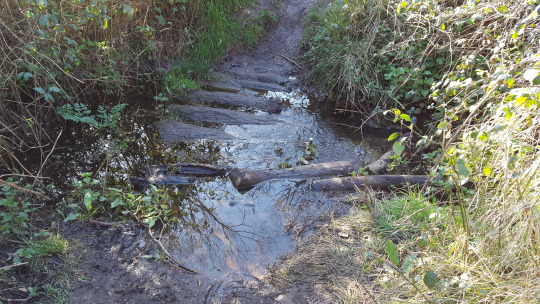
Or the waterlogged path, of which I knew nothing.
So, naturally I took to the logs, got one wet sock but otherwise survived the scramble intact. It was an adventure!
The view was spectacular, a river on one side after a steep drop, and the lake I’d been circling on the other, waterfowl taking off from the river and flying over my head. I carried along the path, excitedly looking at my feet for potential Ramsoms or other plants, breathing deeply, hoping to smell the strong stench of garlic. But nothing, just damp soil, water, and the fresh air.
It was along this path I ditched LeafSnap as my identification app. My final straw was it umming and ahhing about hogweed and whether or not it was really a parsnip. With lesser hogweed that’s not a dangerous confusion, even if it’s drastically wrong. With Giant Hogweed that is potentially lethal, given the plant’s infamous toxicity (seriously, go investigate that terrifying beast). So, instead I moved to iNaturalist, which so far has worked much better, keeping identification assumptions much more closely related, and peer-reviewed by real people when unsure. Happily trotting along I found more Lords And Ladies, brambles everywhere, grasses, dock, more of my good friend Poor Man’s Mustard, and what looked like Forget Me Nots!
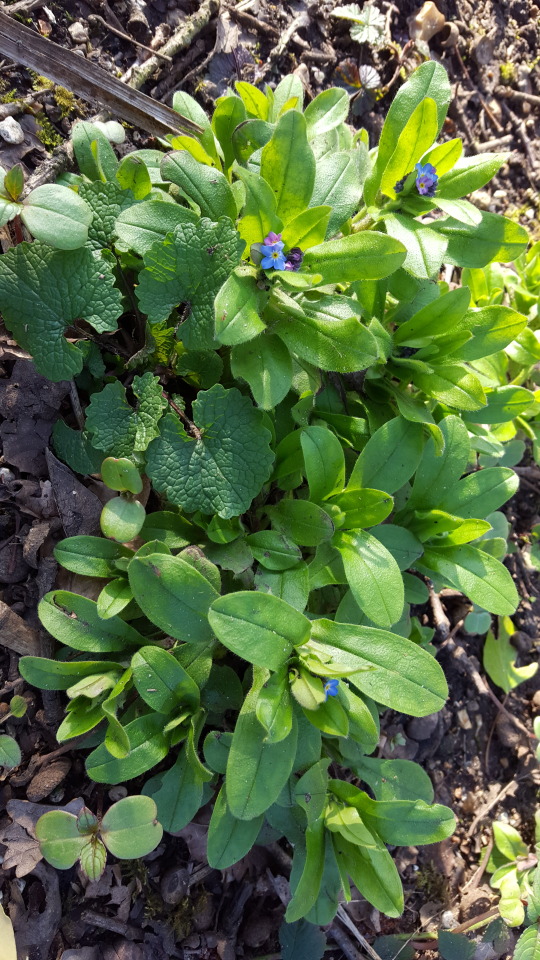
Or more specifically, Wood Forget Me Nots. Gardener variety Forget Me Nots are my favourite flower, but this variation might actually leap to the top. The leaves were so fuzzy and soft. There were fewer flowers than the plant I know, but that may be the time of year as much as anything. The petals were a far richer blue, matching the Alkanet.
At this point my battery dropped below 50% so I started winding my way towards home, deliberately without turning back. I followed the muddied ground towards a swampy plain full of rushes or similar. Amongst the tall reeds there were some with what looks like bugs munching on them, fluffy little curls. When I got closer I saw that they were actually part of the Willows as iNaturalist identified them.

That’s just the family of plants, it wasn’t confident enough to narrow it down to the specific, but I’m happy with that much for something I don’t intend to touch or eat. It’s so cute though!
After the Willows I had a decision to make, with my battery running low enough it might not make it home. Either I went the wiggly way through the houses, or a straight line through some awkwardly overgrown wilderness. Just as I was weighing up these options something caught my eye. Bright greenery in a nest of dead leaves.
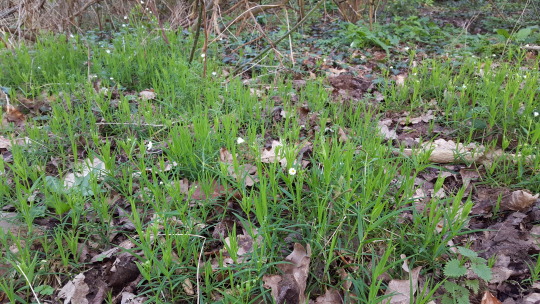
And in amongst the emerald sea in there were tiny white drops. Bright tiny blooms of delicately deliberate petals.
This was Stitchwort.
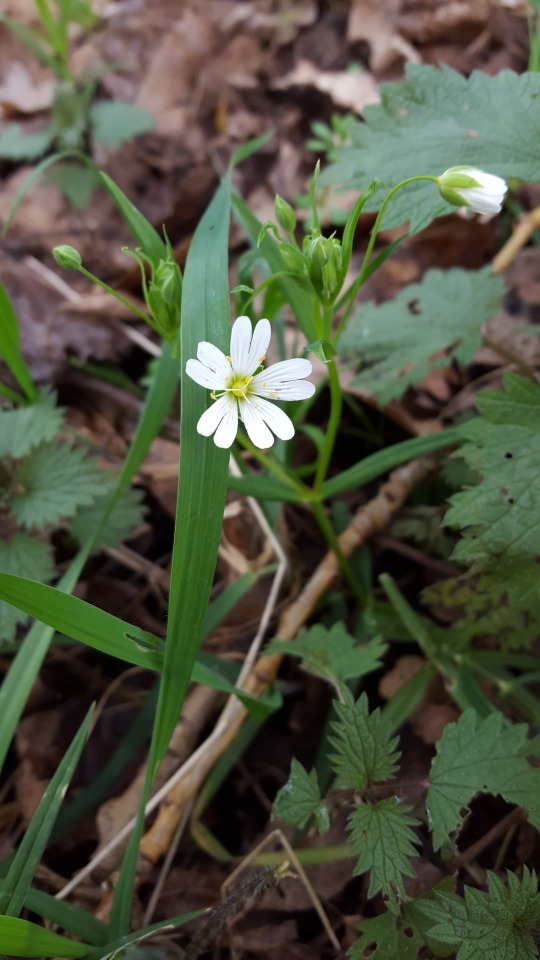
And it was so utterly beautiful. I’d seen flowers like that before but I have no recollection of where. They were exactly the kind of thing I wanted to see. Useful, edible, I even was developing a stitch after 80 or so minutes on the hoof at that point! But did I pick any?
No.
Because I’m an idiot who didn’t think of that till I’d already gotten halfway home, back through the undergrowth scritch scratch scritch scratch and back through the mud squelch squirtch squelch squirtch. It was only at I was opening the gate to return to the main road that I kicked myself for not getting down on my hands and knees to pick some of the Stitchwort, that I could have used it on a practical basis, tested its power. But no, my silly modern brain wanted to go home and have a banana to restock on potassium. Defying the whole premise of trying to reawaken older knowledge and customs.
But still. I know where they are. I’m pretty sure I could find my way back to that small cluster under that tree. They work well in salad apparently. Maybe I’ll do that for myself, a quarantine picnic, lockdown lunch of flowers and leaves.
Of course, yes, that’s the elephant in the room. I got home around 5pm.
Just in time to see the BBC tell me the country was on lockdown.
#lakes#plants#foraging#lords and ladies#waterfowl#stitchwort#alkanet#bugloss#forget me not#sweet maber#flowers#leaves#wildlife#wildflowers#inaturalist
17 notes
·
View notes
Photo


Hypericum perforatum, St John’s Wort. Today is June 24th, St John’s Day. Luke’s Gospel reveals that John the Baptist was six months older than Jesus so those good in math calculated what day would be 6 months before Christmas Day. Lesser minds might have come up with June 25th but the Roman calculation somehow placed it the day before.
On this day, tradition holds we hang sprigs of the plant on our windows and door posts to protect against evil spirits, phantoms, and specters. Hence its ancient name Fuga Daemonum or “Devil’s Flight.” The scientific name similarly translates from the Greek ”hyper” meaning “over” and “eikon” meaning “ghost,” because the scent of the flowers so repelled those in the spirit world that even a whiff would cause them to disappear.
The flowers are yellow upon yellow upon yellow: petals, stamens, pistels, all the same bright shade. That is, until August 29th, or August 9th, or September 9th, whichever day St. John was beheaded (different sources have it as different days), because on that day alone red spots appear on the flowers in memory of this ancient Jewish prophet. I confess I have never seen these spots probably because I keep choosing the wrong day to look. What intrigues me about the flowers is the little notch on the right top corner of each petal. When you first see it, you think it’s a tear or imperfection on a single flower, but then you see it is on every petal on every flower. What could be the purpose of that?
The plant has different names in different places. Some call it Sol Terrestris, the Terrestrial Sun, because dark spirits, like vampires, vanish with the sun. Italians call it the “Devil-chaser.”
The French call it la Toute-saine or “All heal,” for its power to cure. The plant, according to old medical writers, was most effective at treating “hypochondriacal disorders,” meaning I guess, if you had nothing but thought you did it would cure it. St. John’s Wort still is widely used by herbalists to treat depression and can be bought in tablets where ever fine products are sold.
Others claim if you rub the yellow flowers between your hands, they yield a red liquid, again in tribute to St. John. Those believers call the plant sanguis hominis or “human blood.” That name probably would have been a turn off for average suburban gardeners looking for a nice shrubby perennial to fill a spot.
On the Isle of Man, locals believe if you walk on your St. John’s Wort after sunset, a fairy horse will rise from the earth, and carry you about all night, then leave you in the morning wherever you end up at sunrise.
Finally, in Switzerland, young girls on St. John’s Eve make bouquets of the flowers and place them under their pillow at night. If a young man appears in one girl’s dreams, he will soon arrive and make her his wife. Or so goes the verse: “The young maid stole through the cottage-door, And blush’d as she sought the plant of power; ‘Thou silver glow-worm, O lend me thy light! I must gather the mystic St. John’s Wort to-night, The wonderful herb whose leaf will decide If the coming year will make me a bride.’”
0 notes
Photo

Hypericum androsaemum (Tutsan/Shrubby St. John’s Wort) #oneadayplant . Not everyone’s cup of tea, Hypericum can tend towards being rather thuggish in a garden with the largest shrubby species being imposing, rapidly filling space and fairly difficult to remove. They do all grow quite emerald and well though and make a robust garden plant. The flower and berry volumes add a long season of interest and modern forms of H. inodorum in particular makes a colourful shrubs in spring, summer and again in autumn with foliage colour. . It is a non-native naturalised shrub appearing in a gardens from bird activity rather than design in most cases. . Despite some uses in alternative medicine, ALL parts of the plant are poisonous if eaten, so I recommend that you do not try to ingest it and wear gloves when handling it. . Due to its ability to grow quickly from seed and appeal to birds that spread the seed it is a nuisance plant in a number of countries and like a great many European natives is an invasive weed in New Zealand and Australia. . Pretty though. . #hypericum #hypericumandrosaemum #tutsan #shrub #wildflower #garden #landscape #flowers #yellow #berries #red #deciduous #easytogrow #wildlife #iplantsman #plants #plantingdesign #gardening #gardeningtips #advice #gardeingadvice (at Crowborough, East Sussex) https://www.instagram.com/p/CBXxVQxgJIG/?igshid=220qkhyyjy97
#oneadayplant#hypericum#hypericumandrosaemum#tutsan#shrub#wildflower#garden#landscape#flowers#yellow#berries#red#deciduous#easytogrow#wildlife#iplantsman#plants#plantingdesign#gardening#gardeningtips#advice#gardeingadvice
0 notes
Photo





Shrubby St. John’s Wart • Hypericum prolificum
Plant Community: Early successional, Old Field
Native Status: Central & East North US, specifically Missouri. Also native throughout Northeast and Central Canada.
Mature Size (h, w): 1-5 ft, 1-4 ft
Habitat/Preferred Conditions: Average, well-drained soil. Full-sun & partial shade. Tolerates rocky and sandy soil. Tolerates some drought.
Eco-indicator: N/A
Hardiness zone: 3-8
Leaf Color: Green (Summer)
Flower Color: Yellow
Bloom Time: June-August
Theme: The long stemmed yellow flowers of this shrub make it appealing for pollinators which are especially attractive to birds who serve as the shrubs primary pollinators. Also attracts bees and butterflies. Furthermore, this plant is deer resistant as well.
Sources:
http://www.missouribotanicalgarden.org/PlantFinder/PlantFinderDetails.aspx?taxonid=279208&isprofile=1&basic=hypericum%20prolificum
https://guides.nynhp.org/shrubby-st-johns-wort/
https://www.mortonarb.org/trees-plants/tree-plant-descriptions/shrubby-st-johns-wort
https://plants.usda.gov/core/profile?symbol=HYPR
#place: arnold#pollinator: insect#pollinator: bird#vertical: shrub#pollinator: bee#pollinator: butterfly#deer resistant
0 notes
Text
Hypericaceae

Yes, even the name is confusing. Most people have heard of St John’s Wort. Most people have probably seen the shrubby species of Hypericum that everyone grows in their garden and calls buttercup bush because it, well, looks like a bush covered in massive buttercups. And most people are probably fine with that level of contact with these plants.


But I don’t really work that way with plants. I like to know everything I can about them, and it turns out that St John’s Worts take some getting to know. The above flowers are Perforate St John’s Wort, Hypericum perforatum, so-called because of the minute perforations on the edge of the petals. You can only really see those perforations - and the superb black dots on the petals too - using a hand lens, which sounds great until the plant happens to be at the edge of a path in St James’s Park and you’ve stopped by there on your way home from work, surrounded by the people you work with and tourists, all of whom are wondering why you are crouching by a random plant peering at it with a hand lens.

This is Imperforate St John’s Wort, Hypericum maculatum, and of course (of course), it doesn’t have ragged edges to its petals. But what it does have is lovely black streaks on those petals.


All very simple. But there are loads of other species of St John’s Wort, and you can only tell the difference between them based on whether those black dots turn up on petals, sepals, under the leaves or the stem, and so on. You also have to look at the shape of the stem - is it winged, square, round? - to be able to work out what’s going on. And then, after far too long staring at a botanical key (below), you still can’t work out what the darned thing is, and turn to a botanist who tells you it’s probably a hybrid (H.desentangsii, apparently).

Why do I bother with this stuff? Well, it’s partly my father’s fault. He is the one who passed on the gene that makes me want to develop an encyclopaedic knowledge of something random while still being unable to remember to do basic administrative things. He is the one who has, for all of my life, kept wonderful lists of all the birds he’s seen at every house we've lived in and every place where we’ve been on holiday. Ornithology has nothing to do with his line of work. He just takes pleasure in knowing and finding. Why not stretch your mind outside work as well as in it? Why not feel that satisfaction of knowing a little more each day about the richness of the natural world, and feeling just a little awe at the many different species and subspecies of St John’s Wort?
I find people who are languid about the world around them, who pretend that they’re too cool to be enthusiastic, as troubling as they find me with my hand lens. It seems like much more effort to resist finding things out than it is to enjoy the limited time you’ve got to explore and learn about a little bit of the world, right down to the little black dotty details.
And if you really don’t care about the difference between Hypericum maculatum and Hypericum pulchrum, then you might still like this member of the family: It’s ‘Stinking Tutsan’, Hypericum hircinum. It got that name because it stinks. Of goats. Yes, goats. And having found it on the banks of the Thames, I can assure you that those goats had not used deodorant for a while.

2 notes
·
View notes
Text
FAERY LORE
Faery Lore Lore / Faery Types / Elemental Faeries / Attract Faeries / Faery Garden / Garden Dedication
 Lore Beltane is the time when nature comes alive and the Spirits of Nature are most active. It is the time when faeries are most likely to be seen. Faery folk, or the fae, are an ancient race of people who lived in the British Isles long before the Celts or the Anglo-Saxons arrived. They are believed to have descended from the Tuatha De Danann (the tribe of the goddess Dana), a magickal race who flew into Ireland in ships descending from the clouds on Beltane. They came from the four great magickal cities -- Falias, Gorias, Finias and Murias -- and brought with them the four great treasures; the Lia Fail (Stone of Destiny), the sword of Lugh, a magic spear, and the cauldron of the Dagda.
It was from these cities that the Tuatha De Dananns learned all their knowledge, skills and magick. Indeed the De Dananns were said to be unmatched in their knowledge and beauty. From them, comes the vast majority of Gods and Goddesses of the Irish Pantheon.
The enchanted dimension of Faery has existed side by side with our human one for thousands of years. It is said that there was once a time when the human and Faery worlds were one. But legend tells that our human ancestors became trapped in the physical world. They became less and less aware of what was hidden just beyond their physical sight, and the vision of the Faery became lost to them.
Types of Faeries Types of Faeries
where to find them
what they do
Faeries, Elves
Forests, faery hill and rings, fields and wild places, flower gardens
Dance and play. Know the magickal secrets of herbs, stones, and animals. See the future.
Gnomes, Trolls, Dwarves
Caves and mines, under bridges, hollow hills
Know the location of precious gems and metals, and how to forge and form them.
Brownies, Kobolds
Homes and cottages
Help and protect the family. Do chores by night.
This chart is from Ancient Ways by Pauline Campanelli and is not a comprehensive listing.
Elemental Faeries The idea of calling the elements into our circles is a carry over from the days when the faeries were asked to participate in our magick. But elemental faeries are not merely the four alchemical elements of earth, air, fire, and water. We do them and ourselves a great disservice when we merely call them to witness our circles. These faeries have personality and individuality. They are fully sentient beings with feelings and rights. Think of that the next time you call them to your circle. It will greatly enhance your experience. Elemental faeries can, and often will, aid human work, ritual, and magick if approached properly.

The artwork to the left is "The Pathseekerr" by Renee Yates
Faery
Direction, Element
What they do
Gnomes North, Earth Givers of material gain and stability. The rulers of the forest. Protectors of outdoor circles and groves. Seen as "Little People" or green light. Sylphs East, Air Givers of wishes, knowledge and dreams. Delicate beings with beautiful wings. Protectors of magickal applications. Seen as "faeries" or white light. Salamanders South, Fire Givers of passion and creativity. The rulers of fields and fire. Protectors hearth, home, or business. Seen as dragons, lizards, or blue flames. Undines West, Water Givers of love and friendship. The rulers of all water. Protectors of the gates of death and karma. Seen as merpeople, sirens or bright pink lights. Attracting Faeries
Beltane and Midsummer are two particularly good times to contact the Faery world. The Faery spirit is the great force of energy moving through all things, empowering our magick.
The fae are shy creatures, made so by years of mistreatment and misunderstanding by humans. They are jealous of the physical world which contain the living, breathing, trees and plant life they so love and have so carefully reproduced in their own world. Our callous treatment of nature infuriates them.
You must work first to win their trust. Plant a faery garden as a refuge for the little folk. Leave a corner of it wild and uncultivated. Leaving out gifts of food and treasures for them is a good first step. They love ground ginger, barley, sweets, cream, and anything that glitters. Also clean water, butter, wine, honey, and bread. Never toss out faery libations like you would food for wild animals. They consider this very disrespectful. Make up a little basket of your offerings and leave them on your step, in your garden, or under a tree. Favorite faery stones are tiger's eye, peridot, jade, lava, fluorite, and especially emerald. Don't expect these gifts to disappear, as faeries are able to extract the spiritual essence of our physical gifts to them (so be sure to leave them in love and with deep respect.) You will, however, have to replace these gifts often in order to keep the faery folk hanging around.
The Faery Garden Whatever you do to bring life to your garden will bring faeries as well. First of all, plant plants that attract bees, butterflies, and hummingbirds. This will also attract the fae. So put up hummingbird feeders, bird feeders, bird baths, bird houses, even bat houses. Small fountains, ponds, faery statues, or waterfalls are all good.

Here's a short list of plants that attract faeries to your garden:
Common yarrow, Achillea millefolium New York aster, Aster novi-belgii Shasta daisy, Chrysanthemum maximum Western giant hyssop or horsemint, Agastache occidentalis French lavender, Lavendula dentata Rosemary, Rosemarinus officinalis Thyme, Thymus Fountain butterfly bush, Buddleia alternifolia Orange-eye butterfly bush, summer lilac, Buddleia davidii Shrubby cinquefoil, Potentilla fruitiosa Common garden petunia, Petunia hybrida Verbenas, vervains, Verbena Pincushion flowers, Scabiosa caucasica Cosmos, Cosmos bipinnatus Common zinnia, Zinnia elegans
They also love the following plants and trees:
foxglove, primrose, ragwort, cowslips, pansies, bluebells, clover (3-leaf, not 4-leaf), St. John's wort, hazel, rowan, blackthorn, oak, willow, elder, birch, alder, apple, ash, and especially toadstools.
Dedicating the Faery Garden Once the garden is started, you might want to ritually dedicate it as a Faery garden sanctuary. Begin by walking the around the garden with an athame pointed at its boundaries (much like casting a circle). Then sprinkle the perimeter of the garden with a branch of fir dipped in salted spring water. Finally, walk the boundaries of the garden with a lighted incense stick. (It can be left to burn in the ground when you finish.) Then with a wand of hazel, slowly walk around the garden greeting each plant with words like:
Spirits of the (insert plant name), I welcome your presence in the garden.
Feel your love flow from your heart, down your wand, and out the end of the wand. Be sure to welcome all plants, stones, and trees. (Nature spirits are easily offended.) Conclude your ritual with these words:
In the name of the Goddess and the God, I declare this garden a sanctuary For the spirits of nature And the children of the Gods.
When you are finished, leave a gift -- cookies, soda, ale, cream, or bright, shiny things like rings, beads, or stones. from Ancient Ways by Campanelli
Visit the Faery Garden, a delightful site dedicated to the faeries.
Source , earthwitchery.com
Reposted by, PHYNXRIZNG
7 notes
·
View notes
Text
Hypericum Berry Flower | Imported Flower | HFL
Hypericum Berry, additionally remarked as St. John’s Wort, shrubby St. John's Wort, or sweet-amber, could be a seed plant within the Hypericaceae. It’s a perennial woody plant reaching up to seventy cm tall, native to open woods and hillsides in continent. Hypericum berry flowers, Hypericum berry have long stems lined with dainty, pointed blooms.
0 notes
Photo

FAMILIAR FLOWER? This is Perforated St John’s Wort (Hypericum perforatum) - the scientific genus might give you a clue - there’s a much larger shrubby relative in many gardens, commonly known as Rose of Sharon. 16 July 2017.
0 notes